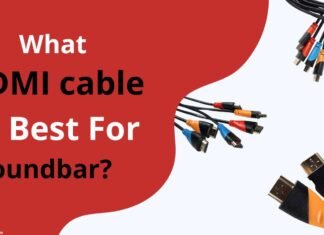In a world where connectivity and screen-sharing are essential for seamless digital experiences, mirroring your Android screen to a larger display has become increasingly popular.

While USB-C to HDMI adapters have been a go-to solution for many, several alternative methods allow you to achieve the same result without the need for a physical cable connection.
In this article, we’ll explore various options to mirror your Android screen without USB-C to HDMI, providing you with versatile ways to elevate your multimedia and productivity endeavours.
6 Genius Ways to Mirror Your Android Screen Without USB-C to HDMI!
Wireless Screen Mirroring
One of the most convenient and popular alternatives to USB-C to HDMI is wireless screen mirroring.
Technologies like Google Cast (Chromecast), Miracast, and Apple AirPlay (for some Android devices) enable seamless screen sharing over Wi-Fi.
With a compatible TV or display, you can effortlessly cast your Android device’s screen without the need for additional cables.
Screen Mirroring Apps
For those seeking third-party solutions, screen mirroring apps on the Google Play Store come to the rescue.
Here are a few Screen mirroring apps for your Mobile:
- AirDroid Cast-screen mirroring
- Screen Mirroring – Castto
- Cast to TV, Chromecast & Roku
- Google Home
These apps leverage Wi-Fi or Bluetooth connections to establish a link between your Android device and the display.
With a few taps, your Android screen comes to life on the larger screen, making presentations and media sharing a breeze.
Smart TV Apps
Modern smart TVs often come equipped with built-in apps that allow direct screen mirroring from compatible Android devices.
By connecting both your Android device and the TV to the same Wi-Fi network, you can easily mirror your screen to the TV, eliminating the need for any external hardware.
Mirroring via PC or Laptop
You can easily transform your computer or laptop into a mirroring hub with an HDMI port acting as an intermediary.
By connecting your Android device to the computer using a USB cable and employing screen mirroring software, you can project the Android screen onto the computer. Then, simply connect the computer to the TV with an HDMI cable to enjoy your Android display on a larger screen.
DLNA Technology
Some Android devices support DLNA technology, enabling seamless media and screen sharing between devices over a network.
Step-by-Step Guide:
Check DLNA Support: Ensure your Android device supports DLNA technology or download a DLNA-compatible app if needed.
Enable DLNA on Android: Go to Settings, find “Connected Devices” or “Display” settings, and enable “Cast” or “Screen Mirroring.”
Check Target Device Support: Ensure your target device (e.g., smart TV) supports DLNA and is on the same Wi-Fi network.
Start Screen Mirroring: Swipe down to access Quick Settings, tap “Cast” or “Screen Mirroring,” and select your target device.
Enjoy Wireless Mirroring: Your Android screen will now be mirrored on the target device, allowing you to view content wirelessly.
Stop Screen Mirroring: Return to Quick Settings, and tap “Disconnect” or “Stop Casting” to end the screen mirroring session.
Utilize DLNA to cast your Android screen to a DLNA-enabled TV or other compatible devices, granting you yet another method of screen mirroring without USB-C to HDMI.
Smart Projectors
Step into the world of smart projectors, which come equipped with screen mirroring capabilities.
By connecting your Android device to a smart projector wirelessly or through other means, you can effortlessly project your screen onto the big screen, making movie nights and presentations a cinematic experience.
Conclusion
While USB-C to HDMI adapters have been a reliable choice for mirroring Android screens, exploring alternative solutions unlocks a world of versatility and convenience. From wireless screen mirroring to smart TV apps, third-party solutions, and DLNA technology, there’s a method tailored to every user’s preferences and device compatibility.
If you have any alternative suggestions, feel free to share your thoughts in the comments below.











